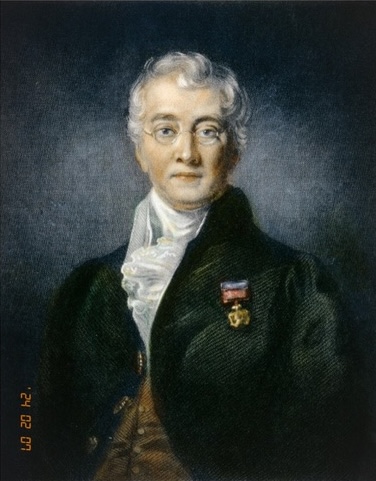
Sir Charles Bell
The Pioneering Founder: Unraveling the Life and Work of Sir Charles Bell in Syringomyelia Research
Syringomyelia is a rare neurological disorder characterized by the formation of fluid-filled cavities within the spinal cord. It affects a small percentage of the population and often leads to a range of debilitating symptoms. One of the pioneers in the field of syringomyelia research was Sir Charles Bell, a Scottish surgeon and neurologist. This article delves into the life and groundbreaking contributions of Sir Charles Bell in the understanding and management of syringomyelia.
Early Life and Education
Sir Charles Bell was born on November 12, 1774, in Edinburgh, Scotland. He hailed from a family of medical practitioners, which likely influenced his interest in medicine from an early age. He attended the University of Edinburgh, where he studied under his uncle, John Bell, a renowned surgeon, and was later mentored by the illustrious John Hunter.
Bell’s keen intellect and boundless curiosity propelled him to excel in the field of anatomy and surgery. His early work focused on the study of the nervous system, which would later become instrumental in his groundbreaking contributions to syringomyelia research.
The Bell’s Palsy Connection
Before delving into Bell’s contributions to syringomyelia, it’s crucial to mention his work on Bell’s palsy. In the early 19th century, Bell made a significant discovery regarding facial nerve paralysis, now known as Bell’s palsy. He correctly identified that this condition was distinct from other facial paralysis disorders, revolutionizing the understanding and treatment of the condition.
Discovering Syringomyelia
Sir Charles Bell’s fascination with the nervous system led him to conduct extensive research on the structure and function of the spinal cord. It was during this period that he made a seminal observation that laid the foundation for syringomyelia research.
In 1815, Bell documented cases of individuals exhibiting symptoms suggestive of a spinal cord abnormality. He described patients with pain, weakness, and sensory deficits, all of which were associated with distinct anatomical changes in the spinal cord. This was a pivotal moment in the history of syringomyelia as it marked the first systematic documentation of the disorder.
The Bell-Magendie Law
One of Bell’s most enduring contributions to neuroscience was the formulation of the Bell-Magendie Law. In collaboration with François Magendie, a French physiologist, Bell postulated that the dorsal roots of spinal nerves were responsible for sensory functions, while the ventral roots were responsible for motor functions. This revolutionary theory laid the groundwork for understanding various neurological disorders, including syringomyelia.
Legacy and Continued Research
Sir Charles Bell’s pioneering work in syringomyelia research paved the way for further advancements in the field. His meticulous observations and insightful anatomical studies provided a solid framework for future generations of neurologists and researchers.
Today, the legacy of Sir Charles Bell lives on through ongoing research efforts aimed at better understanding the complexities of syringomyelia. Advanced imaging techniques, surgical interventions, and pharmacological treatments continue to be developed, all building upon Bell’s initial groundwork.
Sir Charles Bell’s contributions to the field of syringomyelia research are nothing short of remarkable. His keen observational skills, combined with his profound understanding of neuroanatomy, led to the first systematic documentation of this rare neurological disorder. Through his work, Bell not only enhanced our understanding of syringomyelia but also laid the foundation for modern neurological research and treatment strategies. His legacy endures, serving as an inspiration for generations of researchers dedicated to unraveling the mysteries of the human nervous system.
